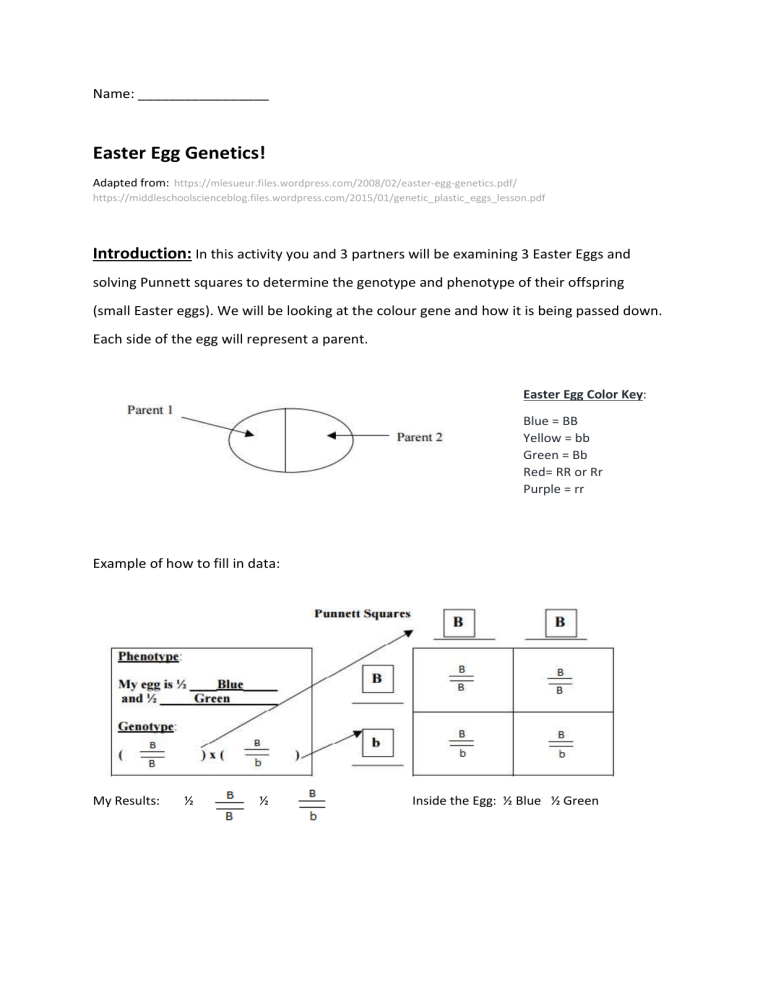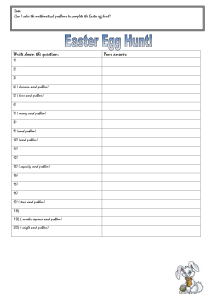Easter egg genetics, simple mendelian mono hybridic exercise
advertisement

Name: _________________ Easter Egg Genetics! Adapted from: https://mlesueur.files.wordpress.com/2008/02/easter-egg-genetics.pdf/ https://middleschoolscienceblog.files.wordpress.com/2015/01/genetic_plastic_eggs_lesson.pdf Introduction: In this activity you and 3 partners will be examining 3 Easter Eggs and solving Punnett squares to determine the genotype and phenotype of their offspring (small Easter eggs). We will be looking at the colour gene and how it is being passed down. Each side of the egg will represent a parent. Easter Egg Color Key: Blue = BB Yellow = bb Green = Bb Red= RR or Rr Purple = rr Example of how to fill in data: My Results: ½ ½ Inside the Egg: ½ Blue ½ Green Materials: • 3 filled Easter eggs per group Procedures: 1. Find 3 partners 2. Get three plastic eggs from your teacher. Do not squeeze the eggs. They will break! 3. Record phenotypes and genotypes of parent eggs using the key. 4. Use a Punnett square to determine the colour of their offspring. 5. Write the phenotypes under the genotypes on the square. 6. Open the egg to check how accurate you were, you may eat the small eggs. 7. Return eggs to basket. 8. Answer follow-up questions. Egg #1: a. Phenotype (color): ________________ X ____________________ b. Genotype: ________X __________ c. Punnett square: Egg #2: a. Phenotype (color): ________________ X ____________________ b. Genotype: ________X __________ c. Punnett square: Egg #3: a. Phenotype (color): ________________ X ____________________ b. Genotype: ________X __________ c. Punnett square: Follow-Up Questions: 1. What does genotype mean? 2. What does phenotype mean? 3. What were the dominant colours of genes in this activity (The capital letters)? 4. What were the recessive colours? 5. Were your group’s small easter eggs genotypes and phenotypes correct for all three your eggs? If not, where do you think might have gone wrong? (Make sure to check your Punnett squares!) 6. Which colour was dominant over the other, blue or yellow? How can you tell? 7. What happened when a purple and a pink egg got together, in other words, what colour were their offspring? 8. How come blue (B) didn’t mask yellow (b)? What colour did you end up with instead? In genetics this is called incomplete dominance. Officially we will use different letters e.g. EB for (egg) blue, EY for yellow and EBEY for green. Why is this better?




